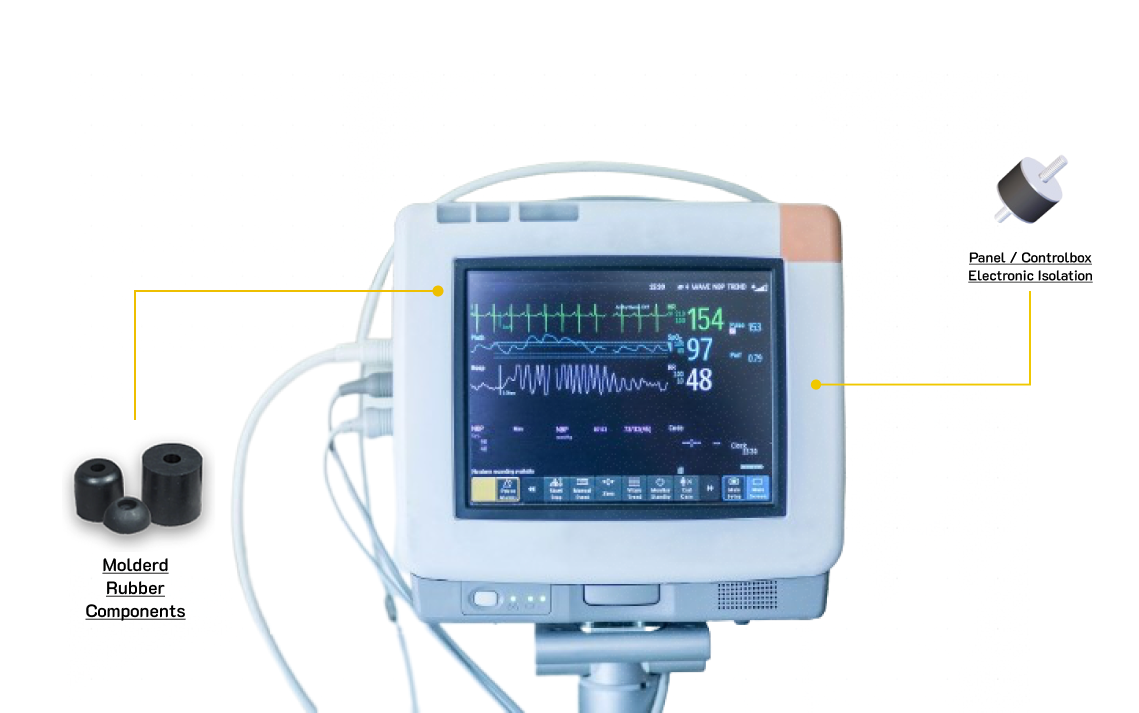Medical Equipment and Rubber Manufacturing
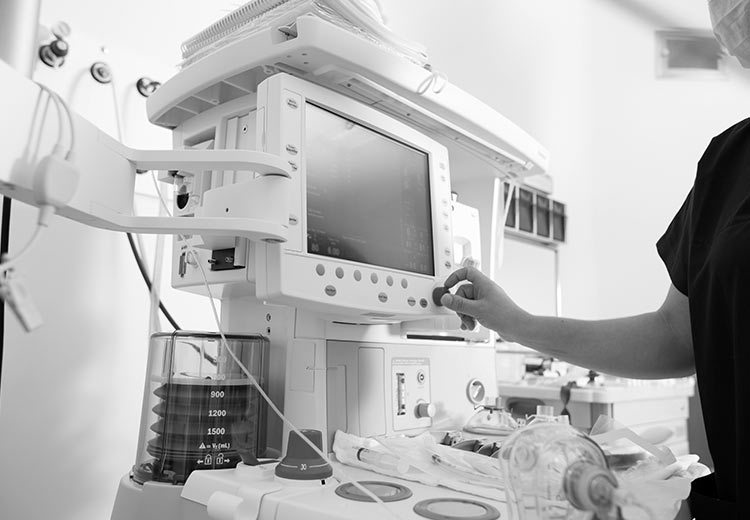
The medical industry is one of the top users of rubber parts. From CT scanners to dialysis machines, rubber parts ensure critical equipment functions the way it should. Continue reading to learn more about how rubber is utilized in the medical industry.
Looking for a high-quality rubber parts manufacturer? RPM Industrial Rubber is the company for you. From custom to standard parts, our team is ready to help you find the part you need. Contact us to get in touch with our team.
Importance of Rubber Parts in Medical Equipment
Medical equipment is designed and manufactured following strict standards. These standards ensure that equipment is durable and reliable. Lifesaving equipment isn’t much help if it breaks at random. Rubber serves a few different purposes in medical equipment. Here are a few:
Vibration Control for Medical Devices
Vibration control is one of the most common purposes for using rubber in medical devices. Equipment that runs on motors or high amounts of electricity often emits natural vibrations. These vibrations can be damaging to sensitive equipment and uncomfortable for the patient. Utilizing rubber shock and vibration control products, such as mounts, can reduce vibration.
Read more about vibration control here: Vibration Isolation Theory and Why It Matters.
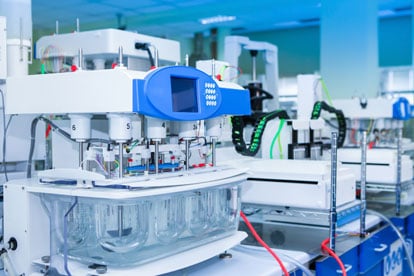
Soundproofing Medical Equipment
The second purpose is soundproofing. Rubber absorbs sound just like it absorbs vibration. Some medical devices can be incredibly loud simply due to their function. Consider a CT machine. While noise isn’t damaging to the device itself, it can be damaging and annoying to patients and medical professionals.
Medical Rubber Seals
Lastly, rubber parts are perfect for sealing. Medical devices are often composed of different tubes, pumps, and other parts all put together. Without a proper seal at the connections of each part, the equipment may malfunction and cause a life-threatening issue for the patient.
These are just a few of the many purposes that rubber serves in medical devices. Medical equipment is sensitive and often requires complex solutions. Rubber is an excellent, flexible material that can protect equipment and patients from manufacturing-related issues.
About Medical Grade Rubber
Typically, when manufacturing medical equipment, materials need to be medical grade. There are a variety of medical grade rubber materials. According to Medical Design Briefs, silicone and EPDM are considered medical grade materials because they are more likely to be approved by regulatory bodies.
These materials are commonly used for medical applications because they are less likely to break down or crack after long-term use. Additionally, EPDM and silicone are fairly resistant to ozone exposure. Because some medical equipment has to be stored for long periods of time, it’s important that they don’t degrade over time.
The Food and Drug Administration is in charge of determining the biocompatibility of different materials for medical equipment. If the FDA determines a rubber as being biocompatible, it’ll be certified as an ISO 10993 rubber.
A second regulatory body is the United States Pharmacopeia (USP). The USP rates materials using classes of biocompatibility. If a material passes all biocompatibility assessments, it will be certified as a USP Class VI material, which is the highest USP class.
Our technical information and reference guide can tell you everything you need to know about the rubber materials we use at RPM.
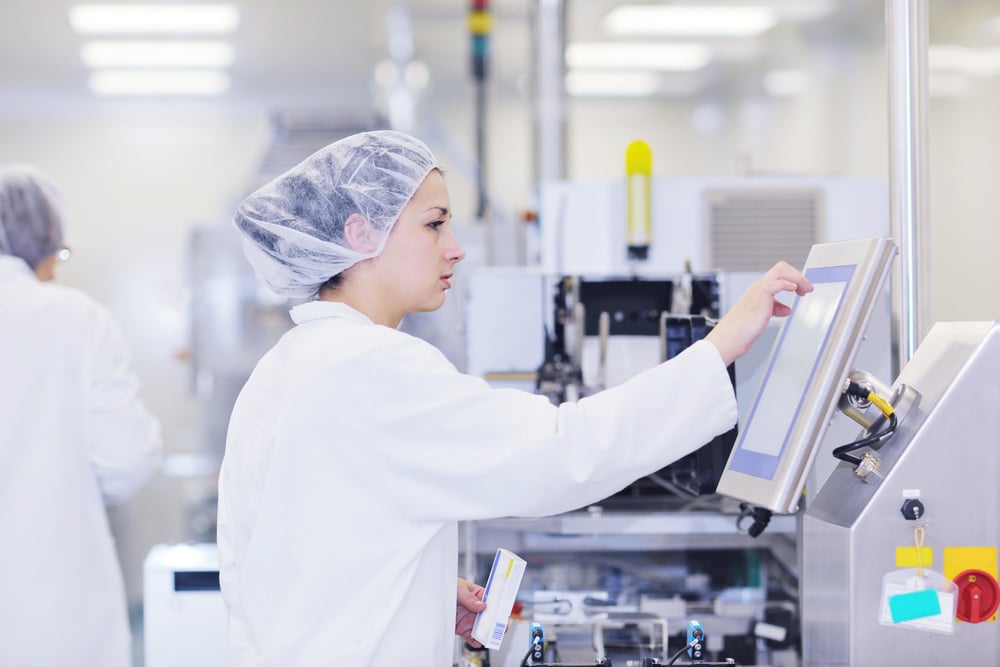
Rubber Parts in Laboratories
Medical laboratories use sensitive equipment, such as microscopes and centrifuges. Minimizing vibration in laboratory areas is key to providing accurate lab results. Even slight vibration can skew results and damage specimens.
Imagine trying to look at a specimen through a microscope when your table is slightly vibrating because of the centrifuge. It’s important that these devices are isolated from each other. This is where vibration control products come in.
Rubber isolates the equipment from vibration. This means that if a microscope and a centrifuge are on the same table, like in the example above, the vibration from the centrifuge won’t disrupt the image on the microscope. The rubber mount absorbs the vibration before it reaches the table.
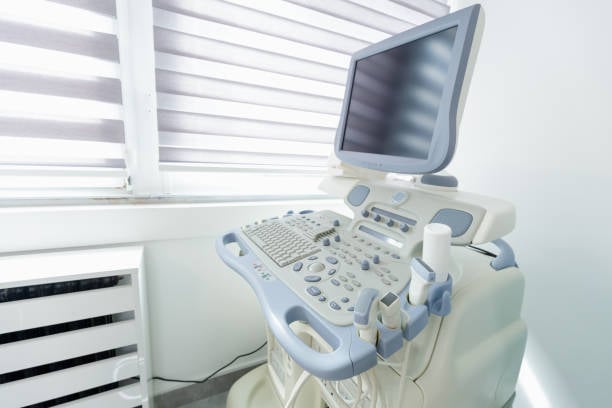 Patient Treatment Equipment and Rubber Parts
Patient Treatment Equipment and Rubber Parts
Rubber parts are important in other kinds of medical equipment, such as the following:
- Infusion and oxygen pumps
- Dialysis machines
- Precision equipment
- IV and catheter tubing
- Sensors and electronic systems
- CT scanners, x-ray machines, and MRI machines
Many of these machines give off natural noise and vibration. Isolating with rubber parts ensures that these devices and tools can withstand volatile conditions.
Rubber and Medical Equipment Trends
The medical technology industry is one of the fastest growing industries in the world. In fact, according to Fortune Business Insights, in 2021, the medical technology industry was worth $488.98 billion. This number is only expected to grow.
Rubber parts don’t become obsolete as equipment becomes more lightweight, technologically oriented, and efficient. Instead, the role of the rubber part changes. Take a look at how rubber parts are utilized in two different medical technology trends.
Medical Artificial Intelligence Devices
Artificial intelligence is being utilized in all kinds of industries. AI machines can take on some of the repetitive tasks that take up the time of healthcare professionals. Artificial intelligence machines utilize quantitative data to inform their actions. In healthcare, AI is used in imaging software and wearable sensors.
The technology used in these machines is sensitive. Sensors and other similar technology can easily break when exposed to heavy vibrations, sounds, and other harsh conditions. Small rubber mounts can be utilized to protect important sensors, chips, and software from becoming damaged by external issues.
Automated Precision Machines
Another technology that is taking the medical world by storm is automated precision machines. These machines can complete tasks as simple as filling prescription bottles to performing minor surgeries. Because the machines are focused on completing very specific tasks, they utilize sensitive equipment that keeps them functioning the right way.
Similar to the way that rubber protects sensors, rubber can also protect these machines. The technology is too critical and too expensive to leave unprotected from vibration and noise.
Quality Rubber Manufacturing for Medical Equipment
Standard rubber parts don’t always cut it when it comes to new technology. Fortunately, RPM has a solution. Our custom molded rubber parts are perfect for out-of-the-box applications such as automated precision machines or AI devices.
Whether you need standard rubber parts or unique, custom parts, RPM Industrial Rubber Parts has what you’re looking for. Our team of experienced engineers has the knowledge to provide recommendations for high-quality parts perfect for your application.
Ready to get in touch with our team? Give us a call at (888) 842-5668.


